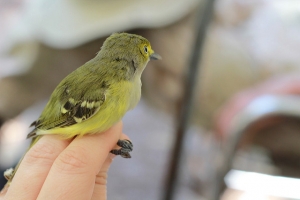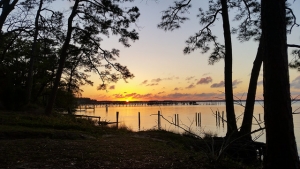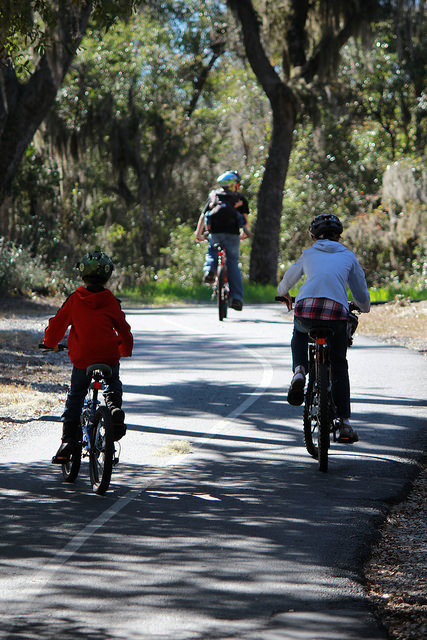Slather on the sunscreen and don your comfortable walking shoes. It’s time for a walk on the wild side.
More than just beaches, the Alabama Gulf Coast is home to wildlife refuges that offer a haven to birds, flora and fauna.
Named as one of the ten natural wonders of Alabama, the Bon Secour National Wildlife Refuge serves as a living laboratory for students and scientists and a safe place for endangered sea turtles that nest on our beaches. Sea turtles – including loggerhead, green and Kemp’s ridley – nest on our beaches from late May to October, coming back to where they were hatched to make nests for their eggs.
The Bon Secour National Wildlife Refuge is also home to the endangered Alabama beach mouse, aptly named as it’s only seen on the Alabama Gulf Coast. You’ll rarely see this small white creature with big eyes and ears. It’s strictly nocturnal and spends its time burrowing small tunnels in the sand, where it lives with its family.
 Also home to migratory birds during the fall and spring migration, the winged visitors use this area for resting and building fat reserves needed for a successful migration.
Also home to migratory birds during the fall and spring migration, the winged visitors use this area for resting and building fat reserves needed for a successful migration.
The name “Bon Secour” means “safe harbor,” and the 7,000 acres it encompasses serve that purpose. On the Baldwin County side of the refuge, four trails range from short one-mile hikes to four-mile expansions. There is no admission fee to the refuge or its trails, and the trails are open during daylight hours. Pets are prohibited. For more information, click through to the Bon Secour National Wildlife Refuge website.
Travel a little farther down the road to the Hugh S. Branyon Backcountry Trail that takes you through a variety of coastal environments and into the heart of six distinct ecosystems. Relish the scent of pine and wildflowers as you walk under the cool shade of canopies provided by ancient mossy oaks. Hike to Gulf Oak Ridge – the highest point on Pleasure Island – and view one of the few remaining maritime forest communities in coastal Alabama. Relax on the benches of the paved trails, admire carnivorous pitcher plants, and keep your eyes peeled for the full-time residents of the trail, including foxes, coyotes, and Lefty the alligator. There is no admission fee to enjoy this immersion in nature.
Eco-tours through the Backcountry Trail on covered electric golf carts are available for $15 per person. The tours, conducted by the City of Orange Beach, are approximately two hours long. Bring your camera, snacks, beverages and insect spray. Restroom and water fountain stops can be found along the tour. Reservations are required; to schedule a tour, call 251-981-1063 or email lellis@cityoforangebeach.com.
Geocaching enthusiasts will find no shortage of treasures along the trail. Be sure to sign the log book and share photos and stories of your search at www.geocaching.com.
 Journey across Mobile Bay by ferry or drive through the towns along the bay. However you choose to travel, make your way to the Dauphin Island Audubon Bird Sanctuary. It’s one of the top four locations in North America for viewing spring migrations of birds, but there is plenty to see year-round. Approximately 95 percent of the 445 bird species in Alabama have been observed on the island. The three-mile trail system within the sanctuary has been designated a National Recreational Trail. Within the sanctuary are 137 acres of maritime forests, marshes, dunes, a lake, a swamp and a beach. Several of the trails lead to Gaillard Lake, where you may observe a variety of turtles and even an occasional alligator. For more information, call 251-861-3607.
Journey across Mobile Bay by ferry or drive through the towns along the bay. However you choose to travel, make your way to the Dauphin Island Audubon Bird Sanctuary. It’s one of the top four locations in North America for viewing spring migrations of birds, but there is plenty to see year-round. Approximately 95 percent of the 445 bird species in Alabama have been observed on the island. The three-mile trail system within the sanctuary has been designated a National Recreational Trail. Within the sanctuary are 137 acres of maritime forests, marshes, dunes, a lake, a swamp and a beach. Several of the trails lead to Gaillard Lake, where you may observe a variety of turtles and even an occasional alligator. For more information, call 251-861-3607.



Leave A Comment